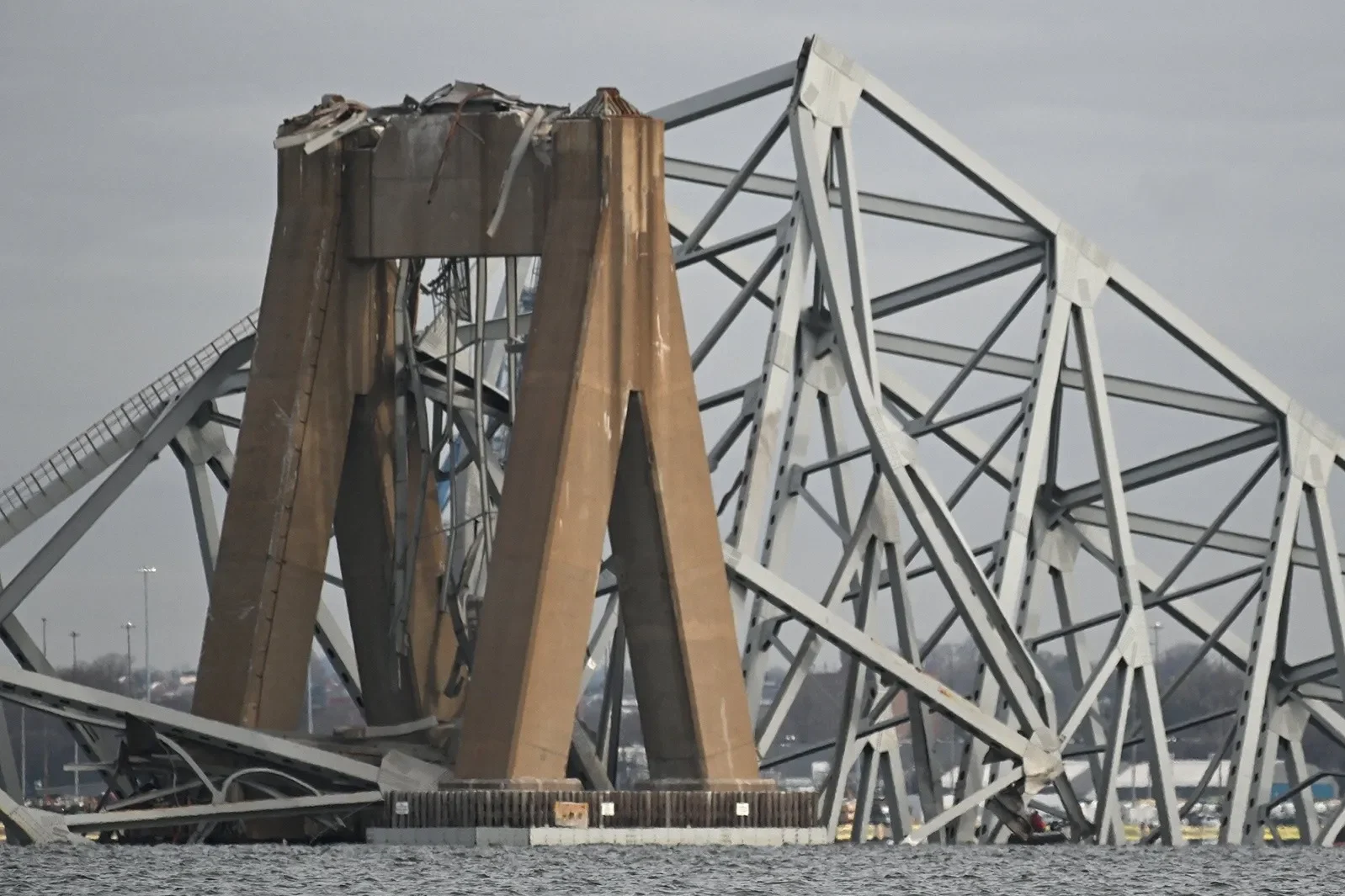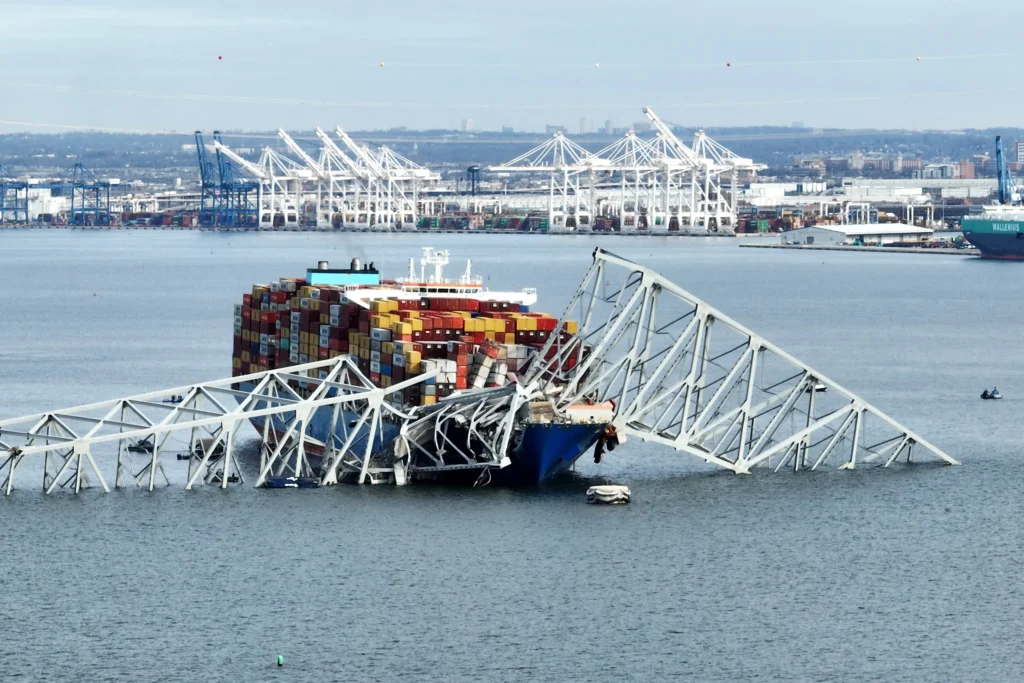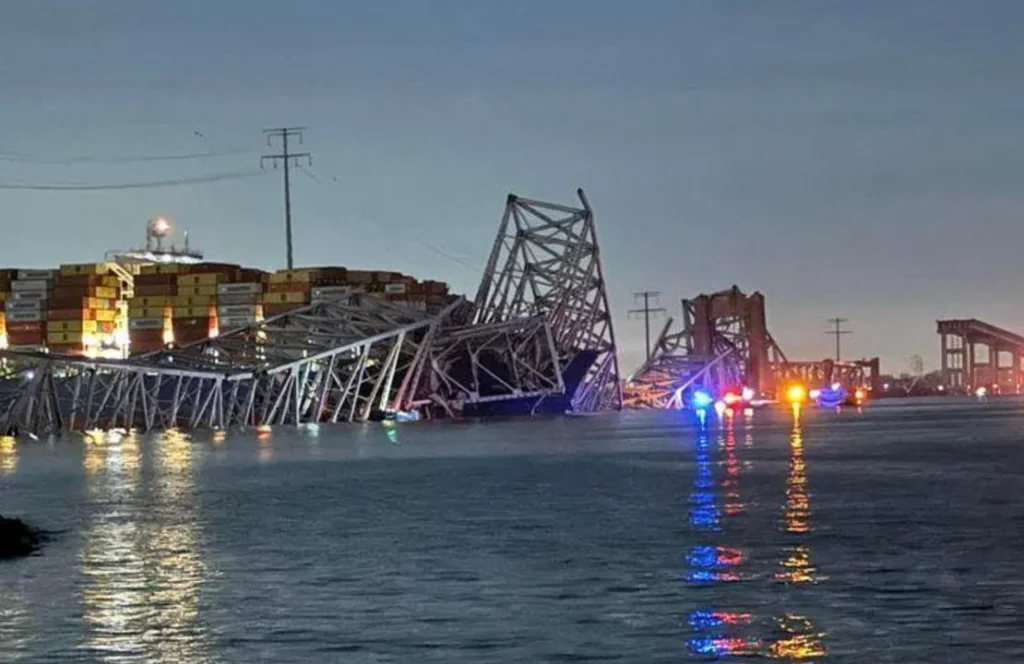Big global problem revealed by Baltimore bridge

The major global problem revealed by the collapse of the bridge in Baltimore has left serious doubts and calls for reflection by transportation authorities around the world.
The collapse of the bridge over the Patapsco River early this Tuesday morning, March 26th, has brought to light the reality of the road system, not only in the United States, but also in the whole world.
Some facts should be analyzed, this last one in Baltimore; bridge in southern China breaks in half, and parts of a bridge cross the hull of a huge ship in Argentina.
A major global problem revealed or reiterated will, perhaps, prompt the U.S. government to review the condition of bridges in the United States.
All of these events occurred in the first three months of this year, all following collisions with large commercial vessels.
This major global problem revealed will put U.S. bridges on the edge of their useful life.
The aforementioned incidents left fatalities: at least five dead in China and six missing in Baltimore who are believed to have died.
Tuesday’s Baltimore collapse focused U.S. attention on the issue after a large container ship lost power and slammed into the Francis Scott Key Bridge, throwing people and vehicles into the frigid Patapsco River.
Victims of the Baltimore bridge collapse include citizens of Mexico, El Salvador, Guatemala and Honduras.

READ HERE: TWO U.S. STRATEGIC BOMBERS WERE WITHDRAWN BY RUSSIAN AIR FORCES.
Big global problem revealed by Baltimore bridge collapse
The incident in China took place at the end of February, when a cargo ship collided with the Lixinsha Bridge in the Pearl River Delta, south of Guangzhou province, a major international shipping center and industrial heartland of the country.
The incident also highlighted the need to analyze the condition of large vessels.
State broadcaster CCTV reported that work to strengthen the bridge had been repeatedly postponed in recent years due to structural problems.
A month earlier, a large cargo ship collided with the Zárate-Brazo Largo bridge, which crosses the Paraná River in Argentina, according to the government news agency Télam -now shut down-, severely damaging the ship, although the bridge remained intact.
Although in theory these incidents appear similar, a large ship hitting a bridge, there may be several factors at play, according to Bassem O. Andrawes, professor of Structural Engineering at the University of Illinois at Urbana-Champaign and an expert on bridge collapses.
The major global problem revealed, or exposed, leaves much to be desired about the infrastructure of developed countries around the world.
For example, in the China incident it appears that the ship struck the body of the bridge, rather than its piers – the vertical columns that support the structure – indicating that “the ship had a certain height that was ignored,” or that the river was “not suitable for such large vessels,” Andrawes said. “It could be human error.”
By contrast, in the Baltimore example, the waterway and bridge are wide and high enough to accommodate large vessels, and the freighter hit the bridge abutment, not the bridge itself, Andrawes said.
It is recalled that the 1980 collapse of the Sunshine Skyway Bridge in Florida after it was struck by a freighter, in which 35 people died.
Many ports and waterways also use “dolphins,” structures rooted in the seabed or riverbed that extend above the water, usually made of wood or steel. Although they are often used as mooring points for boats, they can also protect bridges from ship strikes: on the Sunshine Skyway Bridge, many “dolphins” were installed around each abutment when it was rebuilt.
Experts say there is still much work to be done to improve bridges built for smaller vessels in another era, even with today’s regulations and design codes.







